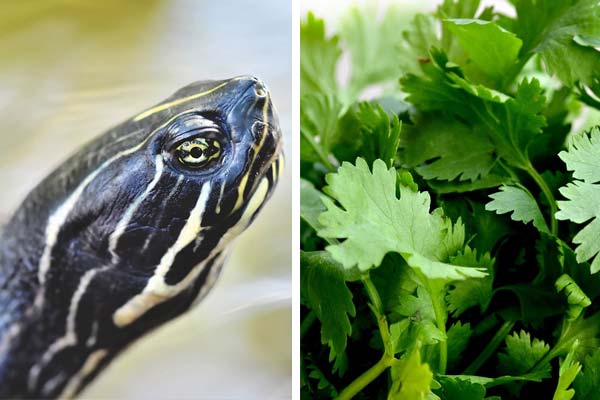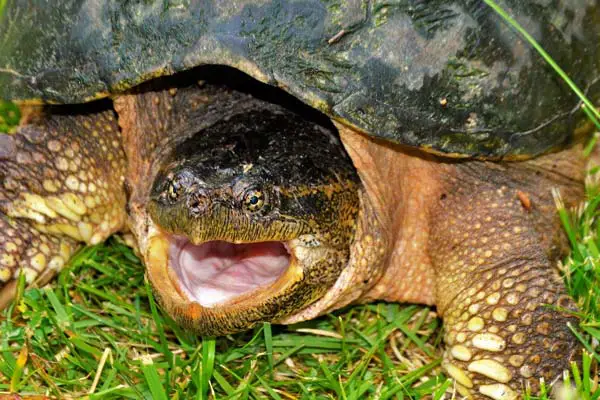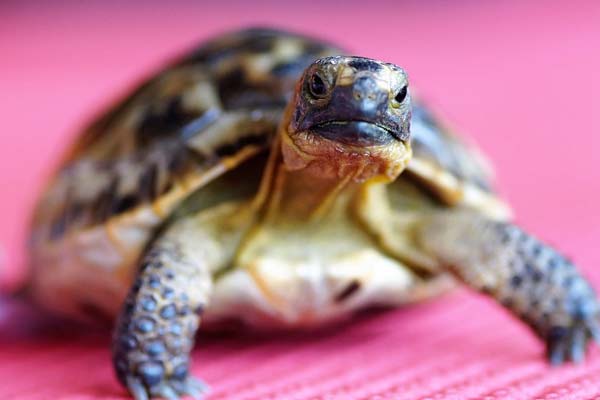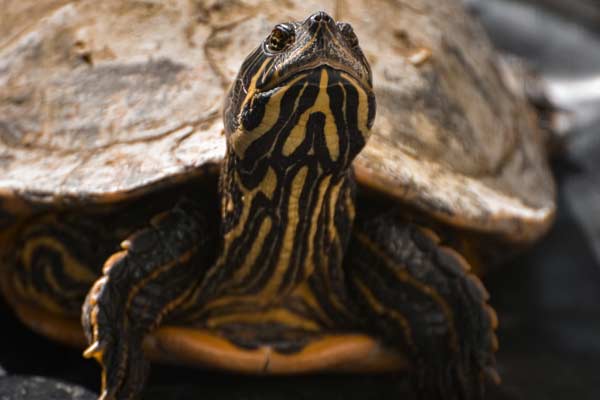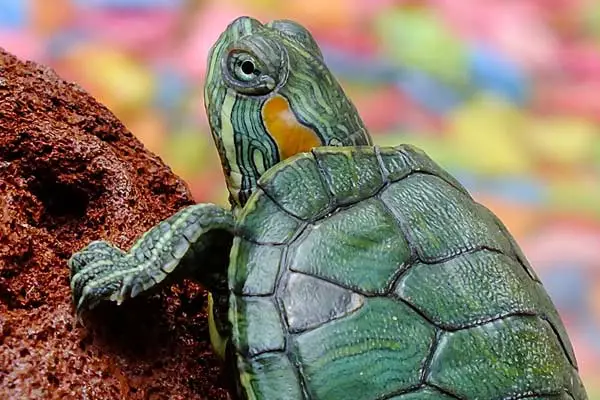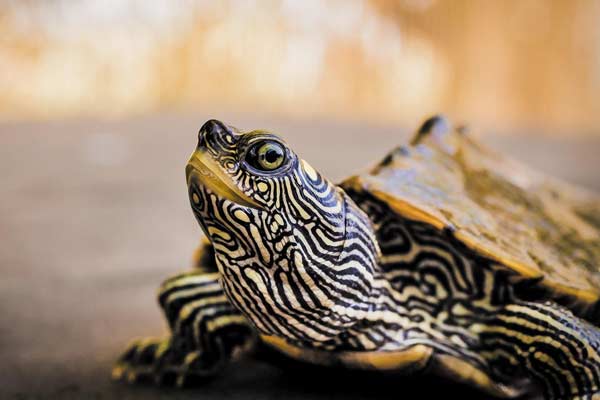Can Turtles Eat Cilantro? Exploring the Possibilities of this Zesty Herb in Their Diet
Turtles are fascinating creatures that come in a variety of shapes and sizes. They are known for their slow and steady pace and their unique ability to retract their heads and limbs into their shells.
As pets, turtles are relatively low-maintenance and can be a great addition to any household. However, when it comes to their diet, many turtle owners are still determining what foods are safe and healthy for their pets.
One food that often comes up in discussions about turtle diets is cilantro. Cilantro is a leafy green herb commonly used in cooking and known for its distinctive flavor. But can turtles eat cilantro?
The answer is yes – in moderation. While cilantro can provide turtles with some valuable nutrients, it should not be the sole component of their diet.
Can Turtles Eat Cilantro?
Cilantro is a leafy green herb often used in cooking and known for its distinct flavor. Pet owners often question the safety of certain foods for their turtles. The answer is yes, turtles can eat cilantro, but it should not be the main part of their diet.
Overview of Cilantro
Cilantro, also known as Chinese parsley or coriander, is a parsley family member. It is commonly used in Mexican, Indian, and Thai cuisine. The leaves of the plant are used in cooking, while the seeds are used as a spice.
Nutritional value of cilantro for turtles
Cilantro provides essential vitamins A and C, potassium, and calcium, benefiting the overall health of turtles. However, cilantro should be one of many sources of these nutrients in their diet.
Benefits of feeding cilantro to turtles
Feeding cilantro to turtles can provide some health benefits. It can help improve their digestion and boost their immune system. Cilantro also has anti-inflammatory properties that can help reduce inflammation in turtles.
Preference of turtles toward cilantro
Some turtles may enjoy eating cilantro, while others may not be interested in it. It is crucial to offer a variety of foods to your turtle to ensure they are getting a balanced diet.
Cilantro can be an okay treat for your turtle once every week or two. Give them a small leaf when possible and leave the rest in the refrigerator for later. They can enjoy their greens without having too many side effects from their food!
Feeding Cilantro to Turtles
Turtles, being omnivores, can consume both plants and animals. Cilantro, or coriander, is a nutritious leafy green suitable for turtles’ diets.
However, it is crucial to consider the quantity of cilantro turtles can consume, how to prepare and offer cilantro to turtles, and the compatibility of cilantro with different turtle species.
Quantity of Cilantro Turtles Can Consume
While cilantro is a nutritious food for turtles, it should not be the primary food in their diet. Turtles should have a varied diet with other leafy greens, vegetables, fruits, and protein sources. Cilantro can be offered as a treat or supplement to their regular diet.
Feeding turtles appropriate food based on size and age is crucial to preventing obesity and related health issues. A general rule of thumb is to offer them an amount of food about the size of their head.
Preparing and Offering Cilantro to Turtles
Before feeding cilantro to turtles, washing it thoroughly to remove any dirt or pesticides is essential. Cilantro can be offered to turtles, either chopped or whole. It is crucial to offer cilantro in small pieces that are easy for turtles to eat.
Turtles can be picky eaters and may not initially be interested in cilantro. It is vital to offer turtles a variety of foods and observe their eating habits to ensure they are getting the proper nutrition.
Compatibility of Cilantro with Different Turtle Species
Most turtle species can safely consume cilantro as part of their diet. However, it is vital to research the specific dietary needs of the turtle species you care for. Some turtle species may have specific dietary requirements or restrictions.
Alternatives and Considerations
When it comes to feeding turtles, variety is critical. While cilantro is a safe and nutritious option for turtles, other leafy greens can be incorporated into their diet for variety and nutrition. Some suitable options include:
- Kale
- Collard greens
- Mustard greens
- Endive
- Dandelion greens
- Turnip greens
High oxalate content in leafy greens like spinach and chard can hinder calcium absorption in turtles. It is important to feed these greens in moderation to avoid calcium binding.
In addition to leafy greens, turtles also require animal-based protein. This can be provided through options such as:
- Commercial turtle pellets
- Earthworms
- Crickets
- Mealworms
- Shrimp
It is crucial to ensure that any animal-based protein is appropriately sized for the turtle and that it is not the sole component of their diet.
While there are many foods that turtles can safely consume, some foods should be avoided or limited in their diet. These include:
- Processed or sugary foods
- Avocado
- Rhubarb
- Tomato leaves and stems
- Chocolate
Researching any new food before introducing it to a turtle’s diet and monitoring its behavior and health for adverse reactions is essential.
Frequently Asked Questions
Turtles are fascinating creatures that require a balanced diet to maintain their health and well-being. Here are some frequently asked questions about turtles eating cilantro.
Can Red Eared Slider turtles eat cilantro?
Yes, Red Eared Slider turtles can eat cilantro. Cilantro is a nutritious leafy green that provides turtles with essential vitamins and minerals.
However, it should only be fed to them occasionally, not as a regular diet. Red Eared Slider turtles are omnivores, and their diet should include plant and animal matter.
What foods are poisonous to turtles?
Turtles are sensitive to certain foods, and some can poison them. Here are some foods that should be avoided:
- Avocado
- Chocolate
- Dairy products
- Onions
- Garlic
- Mushrooms
- Rhubarb
- Spinach
Can turtles eat other herbs or vegetables?
Yes, turtles can eat a variety of herbs and vegetables. Some safe options include:
- Kale
- Collard greens
- Mustard greens
- Dandelion greens
- Carrots
- Squash
- Zucchini
- Sweet potatoes
It’s essential to provide a balanced diet that includes a variety of foods to ensure your turtle gets all the necessary nutrients.
How often should I feed my box turtle?
For box turtles, a balanced diet is crucial. They should be fed every other day, with their diet comprising 50% vegetables and 50% protein. It is crucial to offer diverse foods and avoid daily repetition. Overfeeding can result in obesity and related health issues for your turtle.
Conclusion
In conclusion, turtles can safely eat cilantro, a nutritious leafy green with many vitamins and minerals. However, it is not recommended to feed cilantro as a staple food in their diet. It should be given in moderation and as a treat.
Cilantro benefits turtles with essential nutrients such as vitamins A, C, and calcium, promoting overall health. Its antioxidants contribute to immune system enhancement, protecting against diseases.
It is important to note that not all turtles enjoy eating cilantro. Some turtles may have a preference for other leafy greens or vegetables. Therefore, it is recommended to introduce cilantro slowly into their diet to see if they like it.
When offering cilantro to turtles, it is vital to prioritize freshness and cleanliness. Thoroughly wash the cilantro before feeding it to your pet. Additionally, avoid providing cilantro treated with pesticides or other chemicals.

